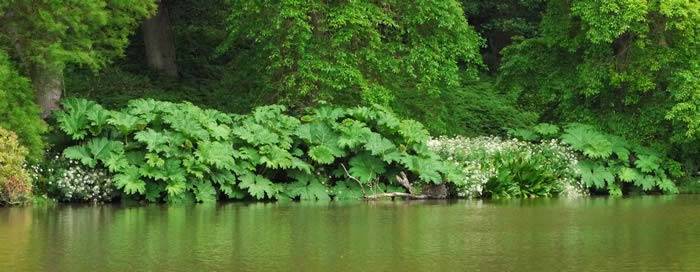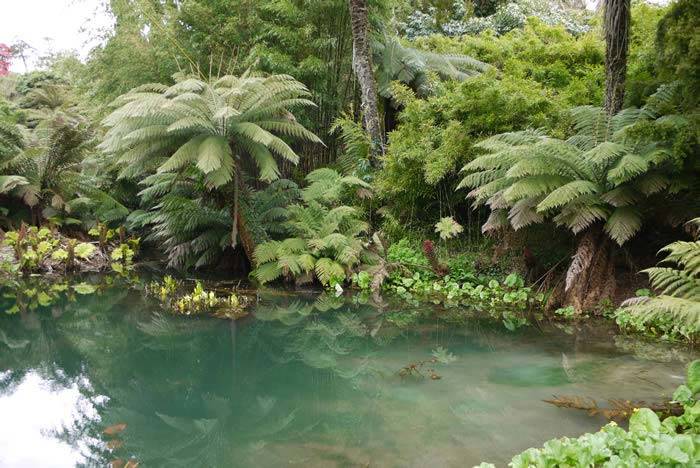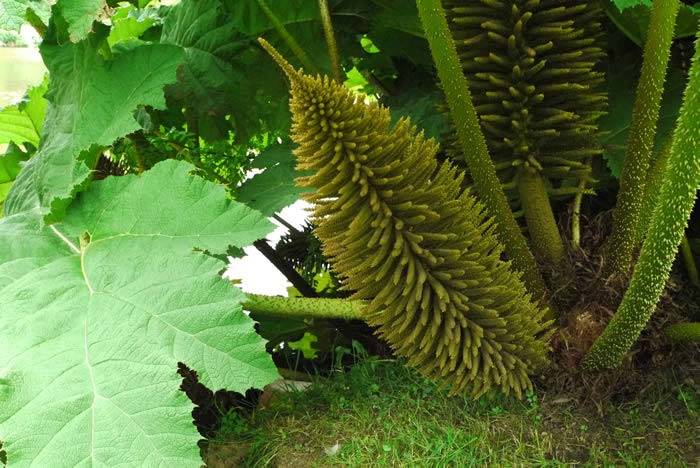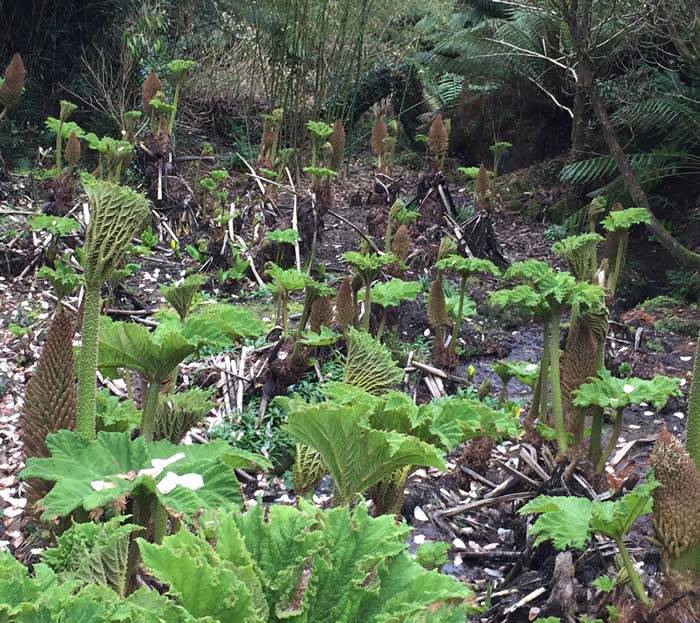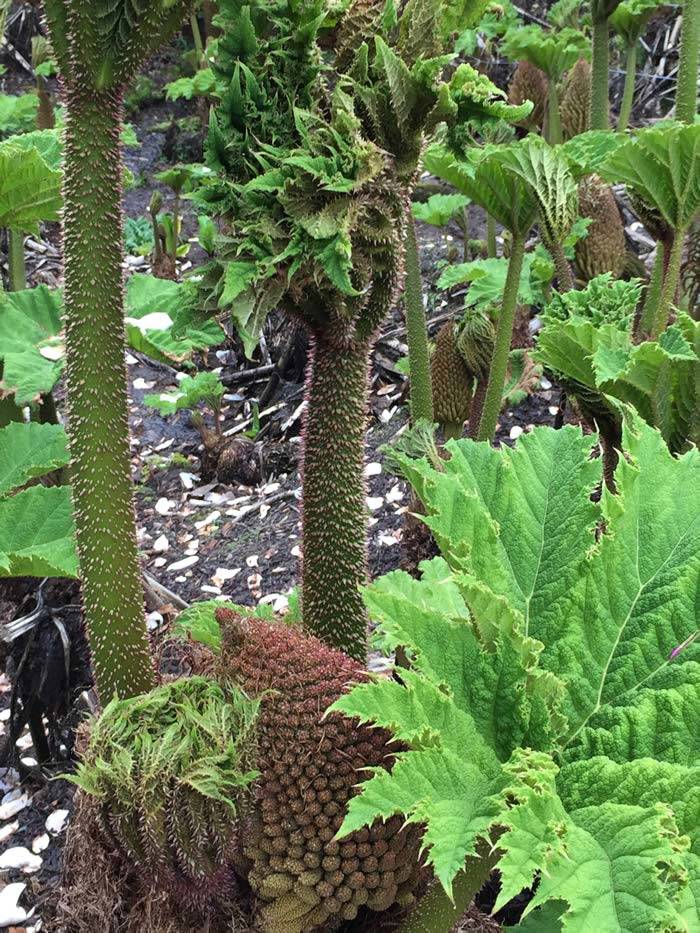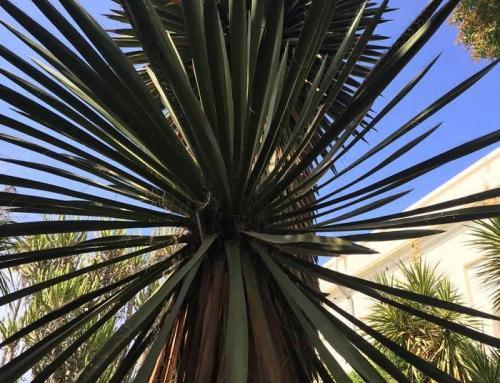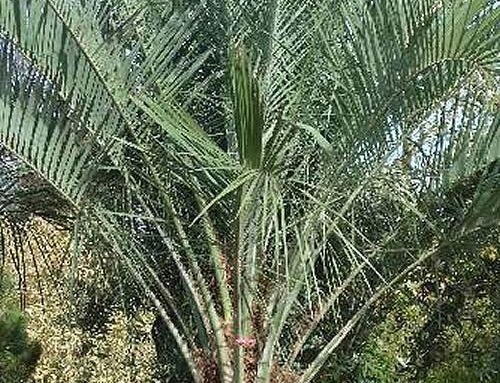Gunnera Manicata is an ornamental perennial that is renowned for having the largest leaves of any plant you can grow outside in the UK climate, a single leaf has been recorded as reaching up to 11 feet across, although huge, this stupendous size is not that common.
How Did Gunnera Reach The UK?
These amazing architectural plants which are also referred to as giant rhubarb, or Chilean Rhubarb, are native to Brazil and were originally brought to Europe by Belgian horticulturalist Jean Jules Linden. JJ Linden was invited by the Belgian government of the time, to make an exploration of Latin American in the mid to late 1830’s. He went on to make several expeditions and although his personal passion was for orchids, he gathered many, many plant specimens for horticultural purposes and he is informally recognised as having introduced Gunnera Mannicata to Europe. This giant semi-hardy perennial is named after Johan Ernst Gunnerus, the renowned Norwegian botanist of the 1700’s…
In 1837, during the heart of plant hunting fever in Europe, the first Gunnera Manicata specimens are grown here in the UK and the first sighting of this plant having escaped landscaped gardens and begin flourishing in the wild was in 1935. These prehistoric looking plants are incredible for their sheer size and stature and landscape architects of the period readily included them in their grand planting schemes for the large estates.
Guaranteed, because of its gigantism, to be a show-stopping specimen attraction, Gunnera was irrisistible to the Victorians and colonies of Gunnera Manicata can still be found today in the grounds and surrounding the lakes of many stately homes in Great Britain.
Architectural Plants In Contemporary Garden Design
Gunnera are now achieving recognition in contemporary planting schemes, providing architectural impact with their gigantic leaves, impressive conical shaped panticle flowers and their ability to absolutely thrive in those difficult to plant areas such as bog land, next to streams and permanently damp areas, these factors alone are worthy of their resurgence. There can be no more impressive plant next to a pond, where their huge leaves overlap the waters edge creating wonderful reflections and welcome, cool shade, for wildlife to shelter beneath.
Tips on How To Grow Gunnera Manicata
Gunnera Manicata is very easy to grow in most soil types, the key to success is having soil that is permanently damp, even wet, with lots of space to spread out. If your preference is for masses of enormous leaves, just remove a selection of the flowers as they appear to encourage extra foliage growth. They will grow throughout the UK but we do recommend a few precautions to protect the plants during winter, fold the leaves in and over the crown of the plant in late autumn, this will protect the most vulnerable part through the frosty months until the spring when the crown begins its re-growth and the impressive leaves emerge once again. If you live in an area that is subject to particularly harsh winter conditions, we do recommend lifting the plant. During the Spring, between March and May is the best time to divide the plants where necessary and this is the best time for planting these giant, wondrous specimens.
Planting Tip – Gunnera Manicata is ideal for planting – near water, in a jungle garden for architectural interest.
Awarded the prestigious RHS Award of Garden Merit in 1993 a sure sign that it will perform well in most UK gardens.
Paramount Plants is a plant centre in North London, specialising in hardy palms and hardy succulents and spiky plants

